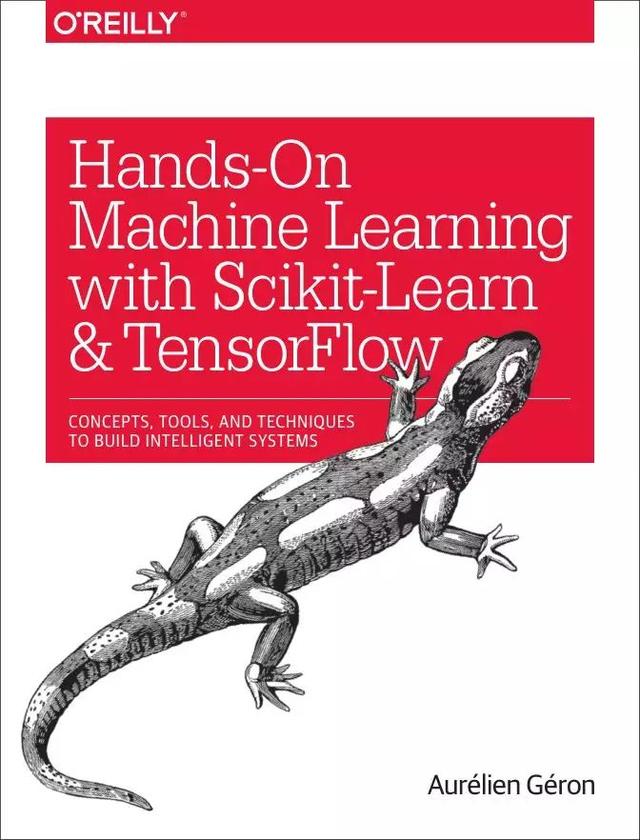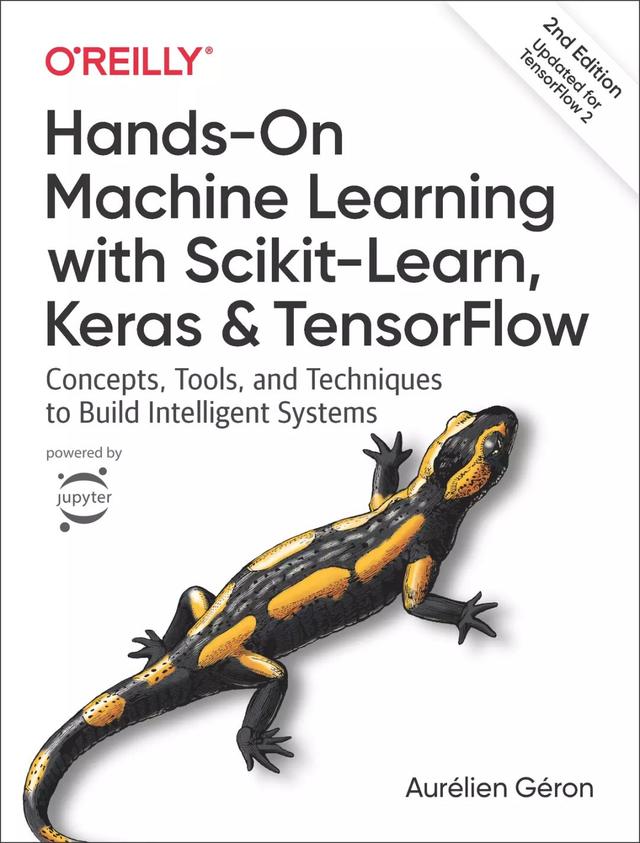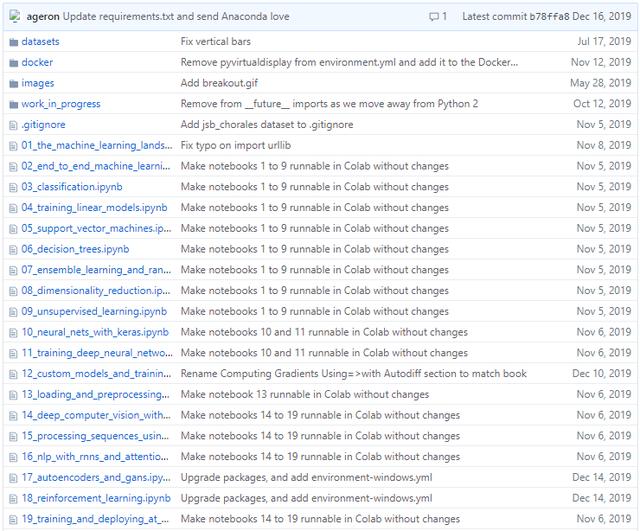早在去年的这个时候,红色石头就发文给大家推荐过一本非常棒的机器学习实用指南书籍《Hands-On Machine Learning with Scikit-Learn & TensorFlow》,中文译为《Scikit-Learn 与 TensorFlow 机器学习实用指南》。

这本书最大的特色从理论上讲就是言简意赅,全书基本上没有太多复杂的数学公式推导,语言通俗易懂,很容易看得懂、看得下去。这一点红色石头也发现是现在很多教材所欠缺的。
重磅!
时隔一年,这本超赞的机器学习实用指南终于正式出版了第二版:《Hands-On Machine Learning with Scikit-Learn, Keras, and TensorFlow, 2nd Edition》,中文译为《Scikit-Learn、Keras 与 TensorFlow 机器学习实用指南(第二版)》,并且在美国亚马逊上开售了,可惜国内还没有开售,影印版和中文翻译版还没出来。请看封面:

书籍作者
这本《Scikit-Learn、Keras 与 TensorFlow 机器学习实用指南(第二版)》的作者是 Aurélien Géron,法国人,毕业于AgroParisTech,曾任 Google Youtube 视频分类项目组负责人,创建过多家公司并担任 CTO,也曾在 AgroParisTech 担任讲师。现在是一名机器学习的顾问。
版本变化
总的来说,第二版相比第一版增加了许多新的内容,最直白的就是第一版使用了 Scikit-Learn 和 TensorFlow,而第二版增加了 Keras 深度学习框架。
从内容上来说,第二版增加了更多的机器学习前沿知识,包括:无监督学习,训练深度网络,计算机视觉,自然语言处理等等。
详细的版本更新可以看这里:
https://github.com/ageron/handson-ml2/blob/master/changes_in_2nd_edition.md
书籍介绍
第二版跟第一版一样,全书也分成了两大部分,第一部分是机器学习基础,包含了第 1~9 章内容:
- Chapter 1. The Machine Learning Landscape
- Chapter 2. End-to-End Machine Learning Project
- Chapter 3. Classification
- Chapter 4. Training Models
- Chapter 5. Support Vector Machines
- Chapter 6. Decision Trees
- Chapter 7. Ensemble Learning and Random Forests
- Chapter 8. Dimensionality Reduction
- Chapter 9. Unsupervised Learning Techniques
第一部分与第一版书籍内容相差不多,仅多了一个第9章的无监督学习。
全书第二部分是神经网络与深度学习,包含了第 10~19 章内容:
- Chapter 10. Introduction to Artificial Neural Networks with Keras
- Chapter 11. Training Deep Neural Networks
- Chapter 12. Custom Models and Training with TensorFlow
- Chapter 13. Loading and Preprocessing Data with TensorFlow
- Chapter 14. Deep Computer Vision Using Convolutional Neural Networks
- Chapter 15. Processing Sequences Using RNNs and CNNs
- Chapter 16. Natural Language Processing with RNNs and Attention
- Chapter 17. Representation Learning and Generative Learning Using Autoencoders and GANs
- Chapter 18. Reinforcement Learning
- Chapter 19. Training and Deploying TensorFlow Models at Scale
这部分深度学习是作者更新最多的,跟第一版差别较大。
随书代码
作者将本书所有章节的详细代码都开源了并发布在 GitHub 上,目前已经收获了 5.3k star。项目地址为:https://github.com/ageron/handson-ml2

不得不说,作者配套的随书代码质量很高!看过第一版的读者应该知道,每个章节的代码都是 .ipynb 文件,用 Jupyter Notebook 就能打开。除了代码,相应的文档解释非常多。
































